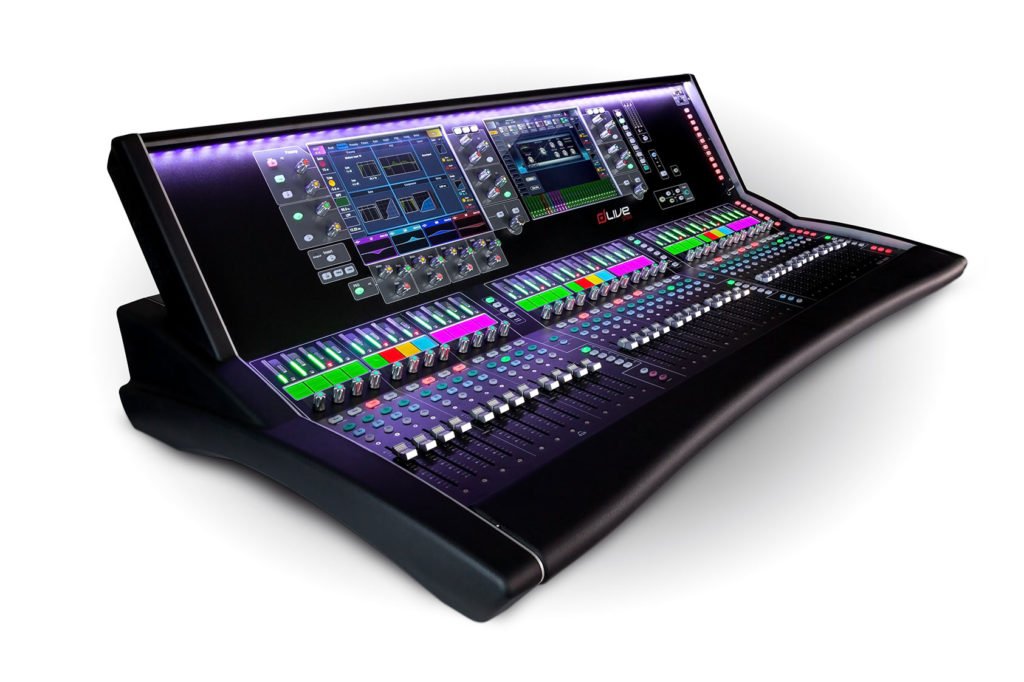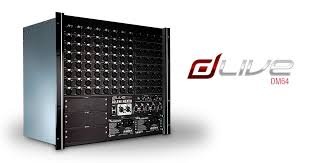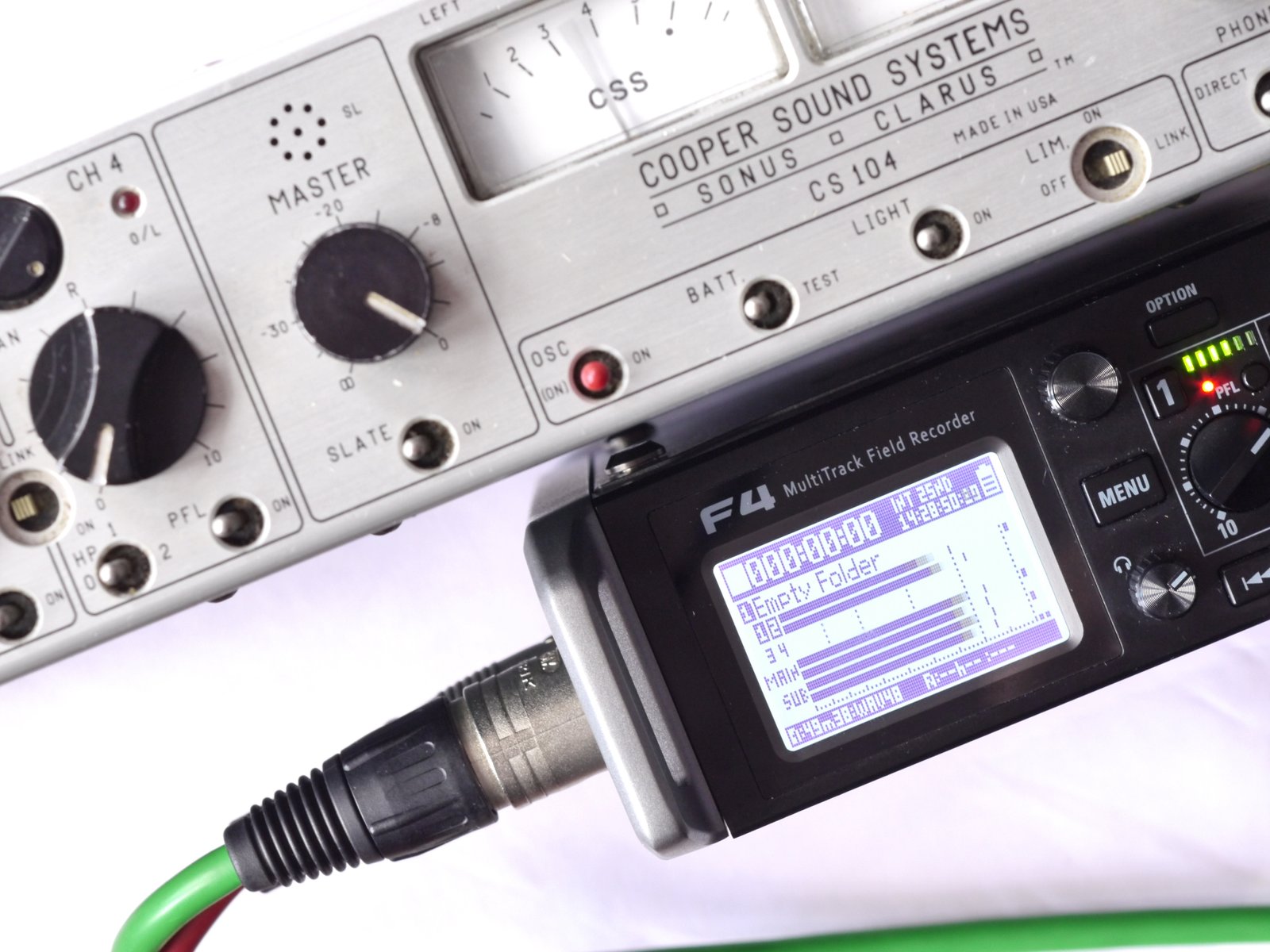Allen and Heath have been making waves in the digital mixer world for quite a while, mostly of late at the more affordable end of the market where the GLD and the Qu series have been attracting a lot of attention and well deserved acclaim. Above these two newer product lines the iLive series has long established itself as a solid option in the live world with great interconnectivity and a reputation for excellent sound quality and solid reliability. Now A&H have revealed the iLive’s successor the DLive, building on the hard won success of the iLive series while raising the bar in just about every area.

There are three new DLive surfaces – the S3000 with 20 faders and a single touch screen (all the DLive surfaces can drive an external screen), the S5000 with 28 faders and two touch screens up to the S7000 with 36 faders and dual touch screens. These surfaces can be partnered with any of the new DM mixracks which come in 32 in 16 out, 48 in 24 out and 64 in 32 out (analogue) channel versions. In a DLive system the mix rack houses not just most of the I/O but also the grunt. All three options have the same processing power differing only in the amount of analogue input and output on offer. Each rack can mix 128 inputs to 64 outputs and all at 96Khz. If 64 analogue inputs isn’t enough you add to this via the new DX 32, this is a 32 channel expander, two of which can be attached to a DM mix rack and one DX32 can also be connected to the DLive surface. Each DX32 has four eight channel expansion slots and expansion cards are available in analogue in with remote mic amps or analogue out or digital in or out in AES3 format. Further expansion is available through the new I/O ports (three on the mix rack two on the surface), each of which offers 128 x 128 out at 96khz. That’s a lot of I/O. And although you can mix 128 inputs – you can route any of the 800 inputs to any of the 800 outputs using the tieline feature, without consuming dsp resources. Game changer. And all this with latency of around .6ms with all processing time aligned.
Each component of the DLive system features dual redundant, hot swappable power supplies and the mix racks and the expander offer dual redundant cat 5e connectivity using the new A&H GigaAce protocol. This is a system that takes redundancy seriously. One of the glorious aspects of the digital age we live in is getting 64 channels down a cat5, of course one of the worst things about the digital age is putting all your eggs in one Cat5 basket. So when the show really, really has to go on then two cat 5’s really are much, much better than one. I pulled one GigaAce out and the DLIVE didn’t miss a beat, I’m pleased to report – the show goes on. I got a bit cocky, so I pulled both out – and then quickly plugged one back in and in under two seconds audio running and the surface responding as normal. Neat eh? And in a clever bit of thinking all the surfaces, mixracks and expanders share a common psu design.
The touch screens on the DLive are seriously nice bits of kit, dimmable for you theatre guys, featuring gorilla glass for all you gorillas and daylight bright. They respond beautifully to the touch and with pinch zoom and swiping options they are intuitive in operation. Surrounding the screens are encoders with embedded multi colour leds that change colour to reflect the controls available at any given moment. The left hand screen is dedicated to processing. Here the channel strip is presented in blocks adjacent to the controls at the screen edges – left, right and bottom, with the centre section available for the detailed information of what you are working on. The right hand screen is your system screen – here you can handle I/O, setup the surface and mixrack and work on routing and meter presentation. We don’t have time to go through the interface line by line but there are some key points. On the processing screen the centre detail section is tabbed and defaults to the bank view of showing the overview of the bank of faders (12 or 8) in which your selected channel lives.
Next you have a global overview of the channel and then individual sections, preamp (including routing and the ability to remove the preamp gain from the surface – when your sharing the preamp with monitors), filters, dynamics etc. However while the centre section changes the two ‘cheeks’ and the ‘chin’remain fixed, so your preamp settings are always visible on the left cheek and on the right you get to pick three options from a set that includes your dynamics, your sends and your effects. Just hit the set up button and any configurable sections of the screen displays setup mode and you have access to your options with drag and drop where applicable. The bottom section of the screen has configurable views of eq and an option to view metering. Your curves can be controlled by the respective controllers or by the touch screen. It’s options and flexibility galore.
However the really clever bit is allowing you all that configurability and then allowing you to nail it down for repeatability. Ben Hammond who was giving us the once over on the desk – always had the main vocal compressor settings visible on the right hand cheek of the Setup screen (which is also divided into a central detail area and three panels, left – right and bottom) and similarly always has gate, compressor and FX sends on the three pages for the right hand cheek of the processor screen. Everywhere drag and drop offers fast and flexible setup. We had some guys from local PA outfit AB Acoustics and we discussed building layers on the fly while mixing – something they do at the moment with pop group functionality, and the DLive has the same trick by allowing you to configure layers using drag and drop on the system screen while leaving the layer you are mixing on and the processing screen to carry on as normal.
The huge flexibility of the desk is visible in areas like setting up sends to mixes. Hit the ‘mix’ key on a Aux and the channels flip to the ‘sends on faders’ we all know and love, who doesn’t enjoy carefully an aux send while fondly imagining they are looking after the L&R output? Tired of that, use the ‘sends’ option in your processing screen – one button or swipe away – on your selected channel or hit sends on rotary and use the option to switch off sends on faders.Here you see the mighty leaps Allen & Heath have taken in desk usability, when I looked at speccing an iLive for a job six or seven years ago – the rotary did anything you liked as long as it was pan. Now it does gain (preamp or trim), pan, sends to selected mix or one of four customisable buttons with access to a myriad options. And for a slightly different cat, set the custom rotaries as sends to your first four Aux busses and you have an alternate workflow option.
Another area of improvement is the mixrack speed. The first choice you have to make is configuring the mixrack for the number of groups/auxs and matrices you need. These can all be mono or stereo. So if you want a 52 mono Aux set up, you can have it, prefer 26 stereo groups, when you have chosen the right layout for the gig rebooting the mixrack to present the new configuration. I tested it with audio running through the desk – don’t try this at home – I lost about two seconds of audio and the whole system will be back up in less than fifteen.
Shows and scenes are comprehensively catered for and crossfades have been implemented between scenes. You have up to 20 seconds available for cross fades and dedicated buttons for operation, including a nice big GO button. And your scene list (or set list!) is always available in the left hand cheek of your system screen. Save out your show files to a front panel usb socket, a second usb on the front panel allows stereo playback and stereo recording.

Summing up is difficult when so much has been left unsaid – 24 DCAs, copy and paste channels, freezing inputs down layers, pinch zoom on the I/O assign matrix – a function for fifty year old eyes, assign all your inputs by dragging your finger at 45 degrees across the IO screen in two seconds. Unlimited stereo input ganging and sixteen multi input gangs on the surface. Four custom meter pages (please can I have the custom meters that auto widen to the screen – it’s a fifty year old eye thing). Use your iLive interface cards with adapters. iPad control and system editors coming soon. Build quality is very fine and all the fixtures and fittings cry out quality. One of the most successful aspects of the desk is the control count – large enough to give you lots of instant access to tonnes of features but avoiding the forest of knobs that induces indecision as you reach for the control you need right now. I think the numbers will sell DLive – the sheer amount of IO and processing will surely attract the theatre market – but I also think the workflow will sell DLive, it is usable in a way that means that makes engineers lives easy, and let’s them have it their way. DLive is an ergonomic triumph, in fact the whole system is a Triumph – a big beautiful Bonneville sort of Triumph – iconic British engineering at its best.


